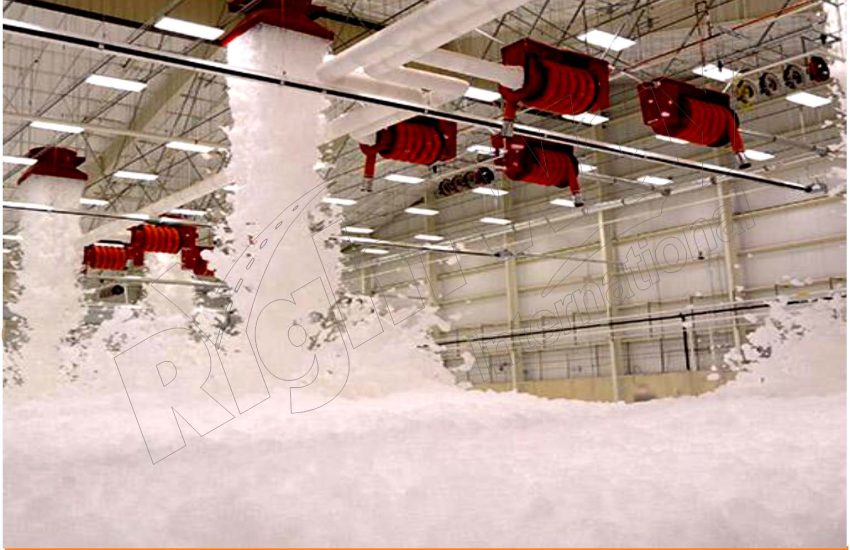Foam Suppression System is a fire protection solution that utilizes foam to suppress fires, particularly those involving flammable liquids. These systems are designed to create a blanket of foam that smothers flames, cools the fire, and prevents re-ignition. Foam suppression is widely used in industrial applications, aircraft hangars, and areas where combustible liquids are stored or processed.
How Does a Foam Suppression System Work?
- Detection: The system typically employs heat or flame detectors to identify the presence of a fire. Once the system detects a fire, it activates automatically.
- Foam Concentrate Mixing: Upon activation, the system mixes foam concentrate with water in a proportionate ratio, usually through a proportioning device. This mixture is essential for creating the foam.
- Foam Generation: Foam discharge devices, such as nozzles or monitors, generate the foam by creating a homogeneous mixture of air, foam concentrate, and water.
- Discharge: Firefighters then discharge the foam over the fire, forming a blanket that isolates the fuel from oxygen and suppresses the flames.
Types of Foam Used
- Aqueous Film-Forming Foam (AFFF): Effective for flammable liquid fires, creating a thin film that quickly spreads over the liquid surface.
- Protein Foam: Made from natural proteins, it is suitable for Class B fires involving hydrocarbons.
- Film-Forming Fluoroprotein Foam (FFFP): Combines the advantages of protein foam and AFFF for versatile application.
- Alcohol-Resistant Foam: Specifically designed to combat fires involving polar solvents, providing a protective barrier against re-ignition.
Applications of Foam Suppression Systems
Foam suppression systems are particularly effective in:
- Refineries and Chemical Plants: Protecting against flammable liquid spills and fires.
- Aircraft Hangars: Safeguarding against fuel fires during maintenance or emergencies.
- Storage Facilities: Protecting warehouses and tanks storing combustible liquids.
- Marine Environments: Providing fire protection on ships and offshore platforms.
Advantages of Foam Suppression Systems
- Effective Against Flammable Liquids: Foam can suppress fires that water alone cannot, making it ideal for Class B fires.
- Cooling Properties: The foam helps cool the surrounding area, reducing the risk of re-ignition.
- Versatility: You can use it in various applications, providing comprehensive fire protection for different hazards.
Challenges and Considerations
- Environmental Concerns: Some foam concentrates contain chemicals that may pose environmental risks, requiring careful consideration during selection and disposal.
- Maintenance Requirements: Regular testing and maintenance are essential to ensure system functionality and compliance with safety standards.
- Training: Personnel must be trained to operate and maintain the system effectively, ensuring readiness in an emergency.
Conclusion
Foam suppression systems are a critical component of fire protection in environments where flammable liquids pose significant risks. By utilizing foam to smother flames and prevent re-ignition, these systems offer effective and versatile solutions for a variety of applications. Understanding their operation, types of foam, and advantages is essential for organizations looking to implement robust fire safety strategies. Regular maintenance and training are key to ensuring these systems perform effectively when needed.


